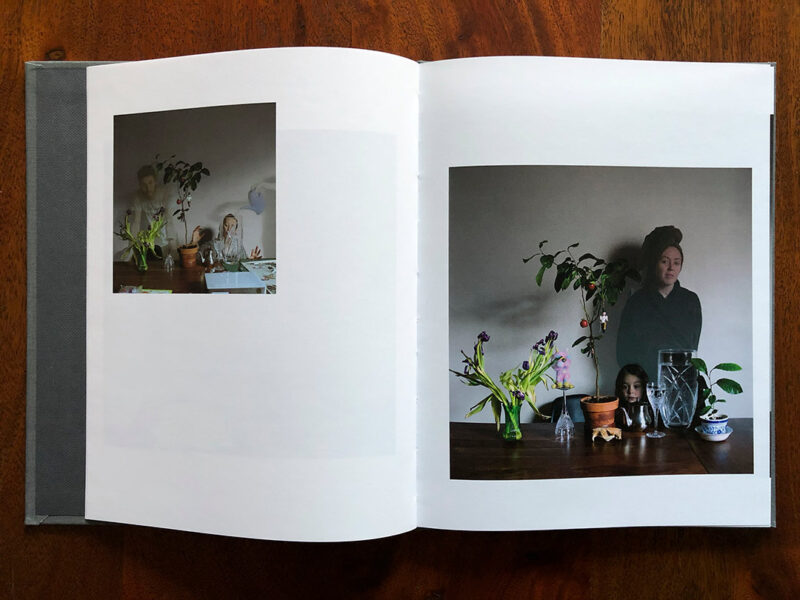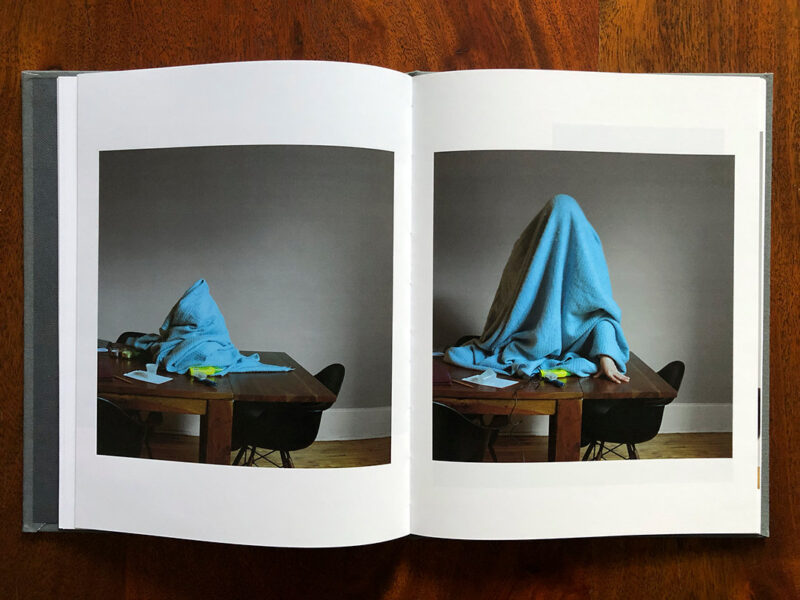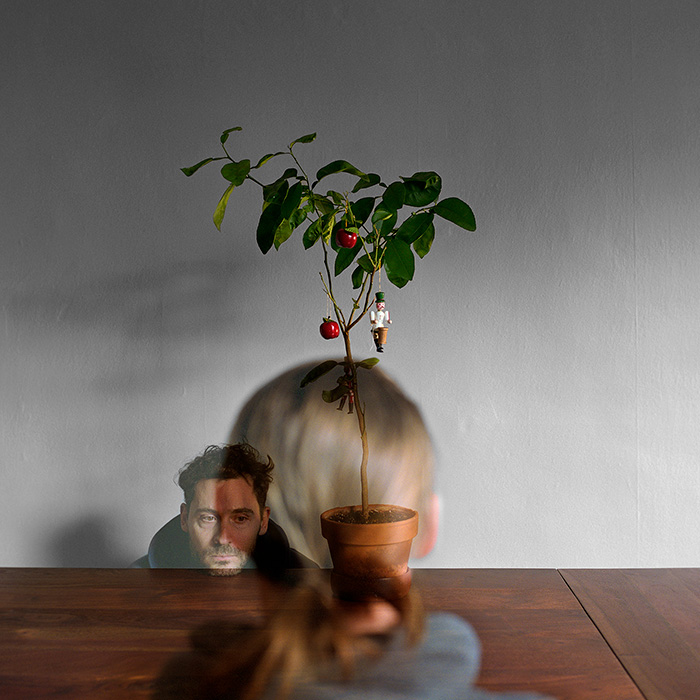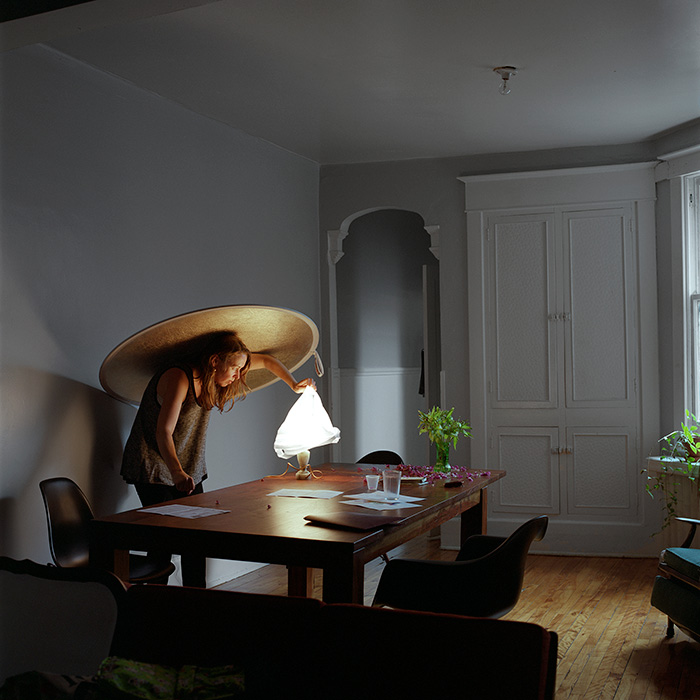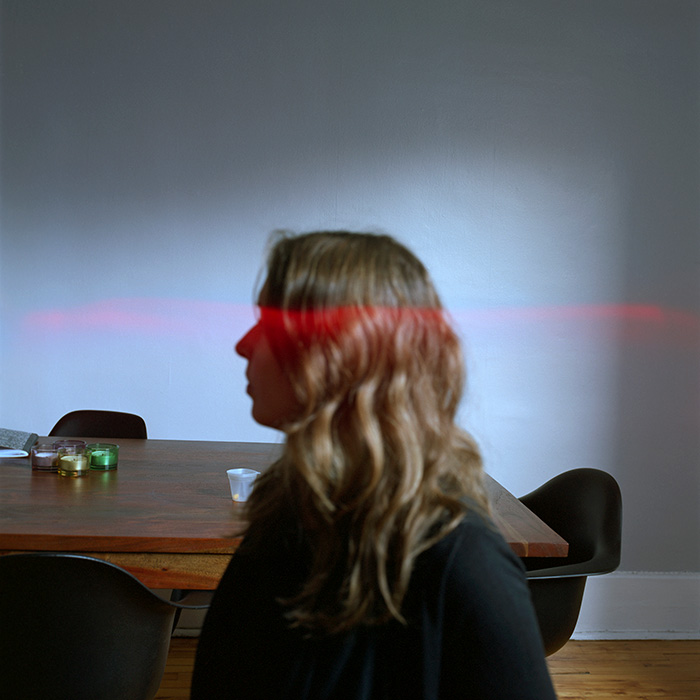[November 29, 2023]
By Louis Perreault
Interior, day: an apartment with wide mouldings and timeworn hardwood floors. On the table in the dining room, diffuse light falls on all sorts of objects. A plant sits beside a child’s toy, a large vase filled with water, a bouquet of flowers, and an antique clock. Behind this ephemeral arrangement, an ombré effect fades a wall from white to darker tones, enveloping the scene in serene calm. Kate Hutchinson turned this familiar place into an artist’s studio, in which she photographed herself for almost three years alongside her daughter Isla, as she gradually regained her equilibrium after the break-up of her marriage. Her narrative is organized around four allegorical seasons, each one marking steps in a learning process and an ongoing transformation.

Kate Hutchinson, Seasons of Separation, Toronto, Anchorless Press, 2022, 116 pages, hardcover, exposed sewn binding, 18 x 23 cm, bilingual.
First, there was winter, the season during which she and her long-time romantic partner separated. On and around the big table, received several months earlier during a housewarming party, she took her first self-portraits with her husband, who was about to leave their family. Both appear transparent – an effect obtained by superimposed images – their lack of opacity seeming to bespeak the looming split. A few pages later, little Isla appears, blurred by a slow exposure time, her arms stretched upward as if she were asking to be picked up. Like her mother and father, she will have to learn about her new life, cultivate a flexibility of the heart that will encompass, perhaps, more than one family to love. Seasons of Separation brings delicacy and a disarming simplicity to the emotional content of its subject. It is a meditation on love and family, but also on solitude, loss, and the importance of time throughout the process of mourning and recovery.
Spring follows. The camera, on a tripod, frames the room more widely. Now alone with her daughter in a new family unit, Hutchinson performs for the lens. We may imagine that she has found in the stability of repetition a way to channel the anxiety resulting from this life change, but here she also seems to draw comfort from the typological method that characterizes some of her previous projects, including the portraits of unknown people made over many months on Mount Royal (The Park, 2013–15), the photographs of her husband produced between 2004 and 2012 (Why Am I Marrying Him?), and the still lifes captured on the red counter of a previous apartment (Red Counter). This approach enables her to explore subjects in depth by assembling them into groups of images centred by her own felt and lived experience. The form of the book as a receptacle for these collections of images is even more appropriate here, as it highlights the chronology of the narrative.
Then come summer and fall, the former season visually marked with a red trace caused by film damaged during development – a particularly effective visual surprise that breaks up the regular rhythm of the sequence – the latter season a continuation of her image practice based on playing and experimenting with the technical specificities of the photographic medium (selective focus, exposure time, depth of field, and so on). The book avoids the pitfall of a decided resolution, in which all paths have become clear; rather, it suggests a process whose outcome will be discovered in the cycles of future seasons. In the final images, we discover an older Isla and her mother, the artist, gazing kindly at her daughter and posing behind the table, which seems to have become less encumbered as the authentic disorder of daily life is re-established.
In an afterword presenting her artistic intention, Hutchinson wraps up her narrative in clear and unpretentious language. The book gains in authenticity and sincerity as the few details of her life mentioned above find their place in the heart of her reflection about the role of photography in calming the upheavals that our lives reserve for us. Translated by Käthe Roth
Louis Perreault lives and works in Montreal. His practice is deployed within his personal photographic projects and in publishing projects to which he contributes through Éditions du Renard, which he founded in 2012. He teaches photography at Cégep André-Laurendeau and is a regular contributor to Ciel variable, for which he reviews recently published photobooks.

